There is a lot of information on the finalization of the USSR-tion of acoustics, but not one found on the finalization of Amfiton 25 AC-027. As a speaker, I want to share my experience in revision. Basically the ideas were taken from other modifications AU, hints of friends and forums.
Wanted to buy these speakers for a long time, but bought only in 2009, with the hand (for 68 $ on those courses). The reason for buying one - a isodynamic tweeter, but you can still add 50 HDN and decent housing. When buying compared with the S-90 and S-90D, Amfiton won WOOFER and tweeter.
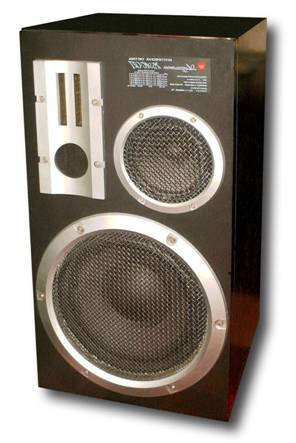
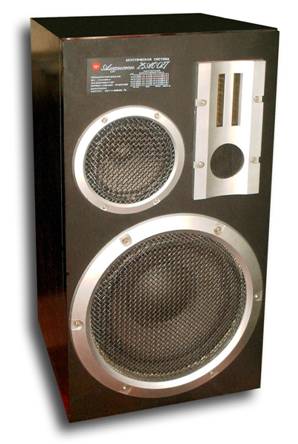
Passport information according to AU
Frequency range: 25 (-17dB) - 31500 Hz
Frequency response in the range of 100-8000 Hz: ± 4 dB
Sensitivity: 86 dB
Full electric impedance: 4 Ohms Minimum electrical resistance: 3.2 Ohms
Limit noise power: 50 W Weight: 25 kg
Dimensions: (HxWxD): HH cm
The bass reflex tube has dimensions: diameter 55 mm, length 165 mm, a frequency of 25-30 Hz. Internal volume of the speaker 41 L. Section frequency range: 500 and 3000 Hz. Speakers: 50 HDH-3, 20 HDS-3 and 25 ГLW-1 (10 KI-1-4).
Shape the frequency response of the sound pressure measured along the axis, Kriva:
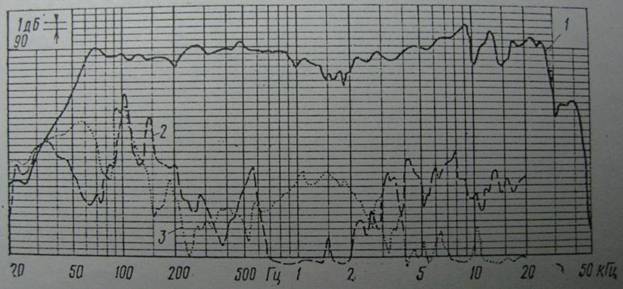
Amplitude-frequency response harmonic distortion 2nd and 3rd harmonics is shown in the photo, curves 2 and 3. Harmonic distortion is measured with the average sound pressure level 90 dB.
Got in a good condition, never been down, only the suspension on bass scattered. First audition of the house certainly impressed.
Source KENWOOD DP 1060
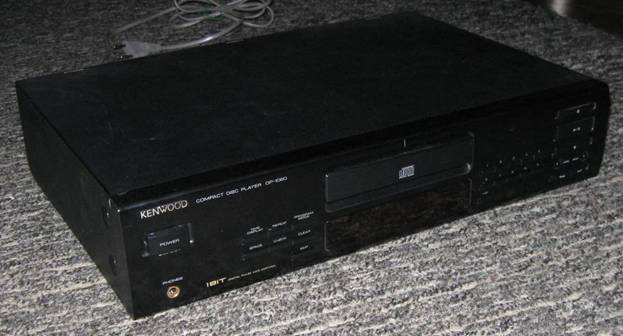
Amplifier ODYSSEY-U-010
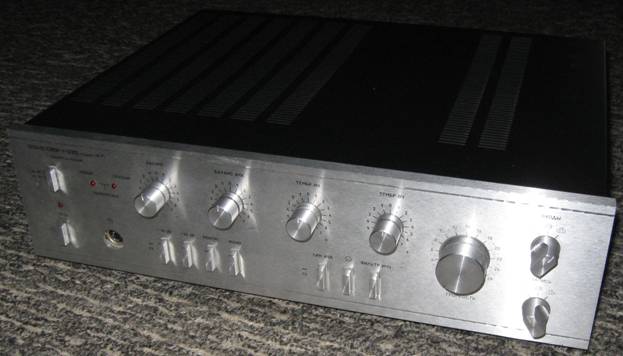
The detail and sophistication on HF music, good bass, but the middle, as elsewhere - not really.

 _
_

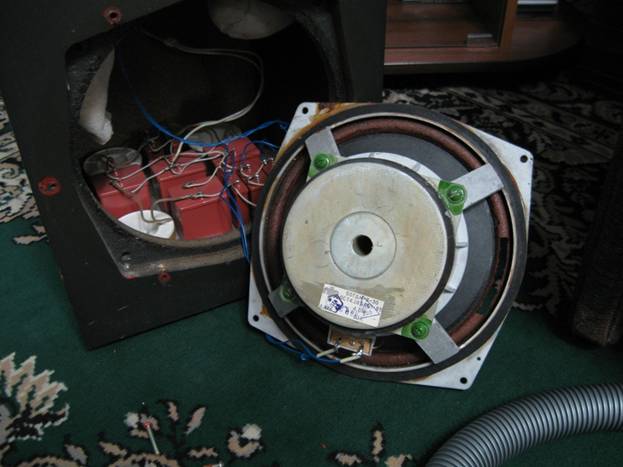
The body is made of particle Board (front and back) and plywood (sides, top and bottom). Wall thickness 18 mm, except the front, she is 38 mm In the upper part of the body are two sausages with cotton wool. The filter is assembled on a metal chassis, wire naturally thin, terminal no. At the end of the phase inverter is attached to the wire bint rather it is a struggle against the whistle. Overall the build quality is not bad, but the good it will not name. But there is a field for improvements.
And now to business. After long runs on the tracks has established the following stages of work on these speakers:
1. Work with housing
2. Replacement midrange
3. The resampling filter
4. Replacement suspension on bass
5. Replacement wiring
6. Improve the appearance and Assembly
I want to warn you that my revision does not have a benchmark or ideal, this is just one possible example of a refinement of this AC, because everyone has different tastes. And maybe someone that my work will seem incomplete, incorrect or even meaningless, because I was doing for yourself and your taste. So let my work be sure to only one of the options in the knowledge of acoustics.
1. Work with housing

Analyse everything, to the last screw. Detail to describe the process will not, I trust that none will not occur.
Here the main work is to strengthen the walls and sealing the seams. The seam was done with white glue, put the speaker at an angle of 45° and poured the glue seam (this is convenient to use a syringe), allowing it to dry completely. Drying one seam lasted about 1-2 days, this is the longest stage of the work, but the result is worth it. Finally got the case with no sounds when struck, almost like stone.
In one case I installed 3 spacers. Two on the side, and one on the front-back. Made with solid wood, oak and acacia, tight scored and put on PVA, without screwing screws and covered with batting. Spacers installed after gluing the seams. After installing the struts, tassel passed the seams with glue again. To paste the entire case, in any material did not, think unnecessary. Odysseus doesn't give much to go woofers, so no hum. The result was that such a body inside.
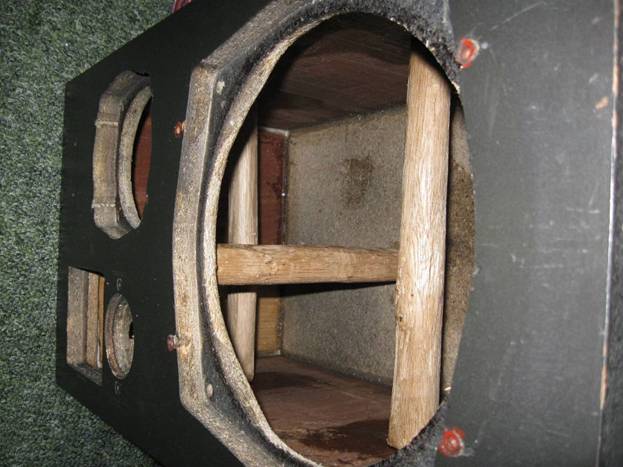
Also cut out the lining from LWП, under woofers, 2 for each. Because the safety net is removed, between the speaker and the overlay appears quite a distance to cover, I came up with the speakers slightly forward, to the same strength not hurt.
The cap under midrange speaker, I shortened it for the future magnet 30 HDS. The cover was made of 16 mm chipboard. Made due to the fact that its magnet it covers almost the entire amount back. Inside are covered with batting, pasted into the hole, outside, in the body - felt. The phase inverter tube is shortened by 1 cm, pasted into the holes and inside the housing are covered with felt.
Back on the former site of the cable openings, cut out the hole for the terminal. Put on the glue and pressed by screws.
2. Replacement midrange
Here the options are many. You can leave 20 HDS, change it to shirokopolosnykh type 5 GDS, or import. I already had purchased a new 30 HDS, with fabric rubberized suspension. 20 HDS in my case was with polyurethane suspension. A direct comparison when listening confirmed that 20 HDS has really Gosnay sound. Therefore, the replacement I believe it is justified, despite the fact that 30 HDS has such a suspension. GDS sounds brighter and more colorful, the sensitivity alike, sound 30 HDS can only call more linear.

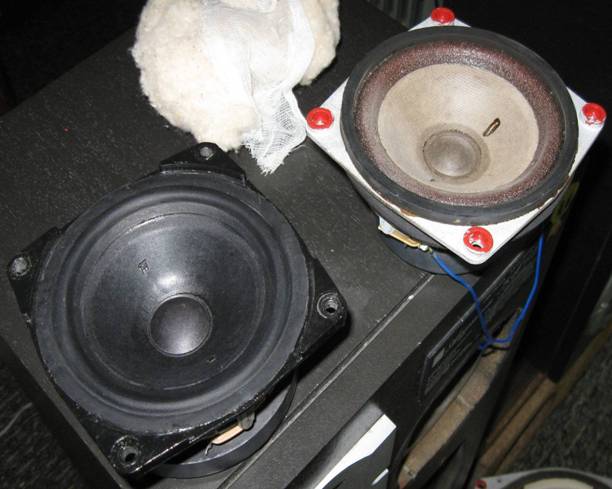
In the end, the sound has changed for the better. Appeared expressiveness and naturalness in sound. The sound became more dynamic.
 _
_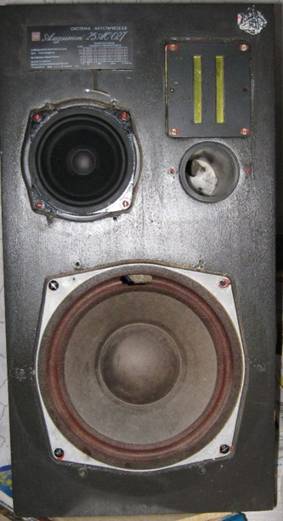
3. The resampling filter
Recalculate the filter is decided due to the fact that the section midrange and tweeter too low, in the region of 3000 Hz. With the new filter LF / MF section is slightly raised, MF and HF raised to 5500 Hz.
Here is the chart of the native filter Amfiton:
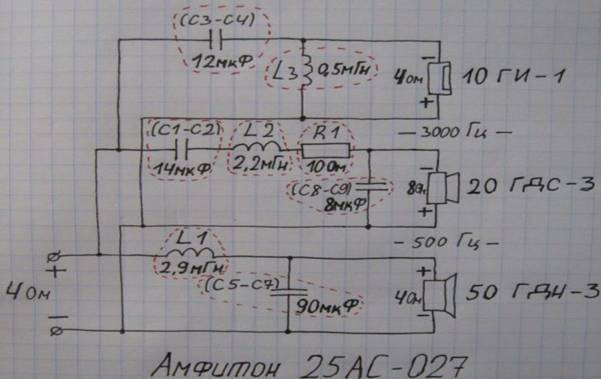
Devices to study response was not, therefore, set up by ear. The only possibility of measurement was in the attenuation of the filter, here:
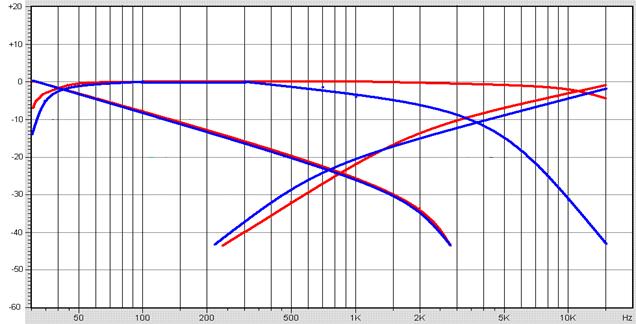
Blue marked plots of the decay of the native filter, but without the load of the speakers. Marked in red is my version of the filter, too, without speakers. When the load (loudspeaker) the attenuation of the filter decreases and the curves are steeper, plus also added AFC speakers themselves and the final response will be quite different than these charts. So do not pay attention to too smooth recessions.
The native filter shows that the LF / MF section is about 750 Hz, MF and HF - 3700 Hz. According to the new (red graphics) LF / MF - 40 Hz, MF and HF - 12000 Hz. When you turn on all the speakers, the other sections will, frequency response all the more.
The filter configuration held in the place where will be the speaker. To each speaker and solder the wires, and already on the couch, in a normal setting selected items. The final result achieved after 4 months, even when the speakers were already fully assembled.

As a result came to this filter:
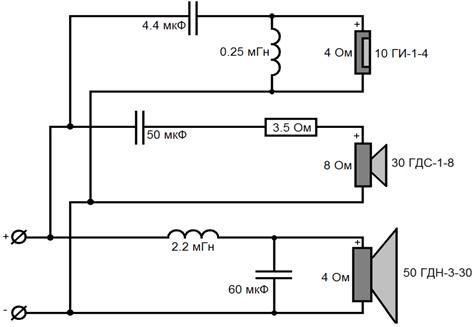
The phase agreement of the same speakers. On second order WOOFER, a little less denomination than it was. On MF the trim on the bottom. Since 30 HDS above need not take (above 5 kHz) on top of cutting did not, and the sound is so alive. Resistance to reconcile sensitivity. On HF the second order. Everything is simple and clear. Coil on bass taken from the old filter with the MF link. The coil on HF I took another AC. Capacitors are dialed the same way with the old filter.
The capacitors I used K73-11 (RF link) and MBGO (MF and LF chains). Also tried K73-17, but did not like the sound. All items are glued to the floor speakers.

4. Replacement suspension on bass
Old hangers just crumbled on the eyes, especially at higher volumes, so the repair is mandatory. Replacement is quite simple, old retractable suspension, the new glue.
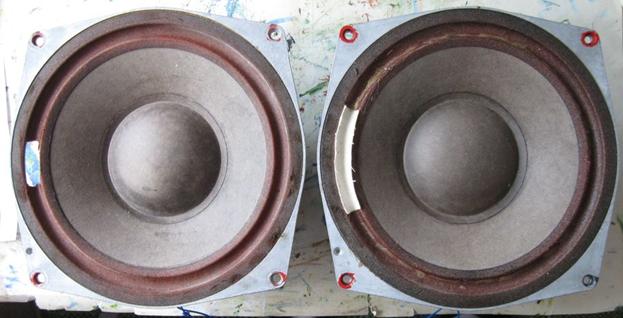
Cleaned the old suspension and all that remains. I worked as a solvent. Especially carefully worked on the diffuser. Cap and centering washer was not peeled off. Even without the suspension speaker plays as needed, without friction, but only in this position. The result:
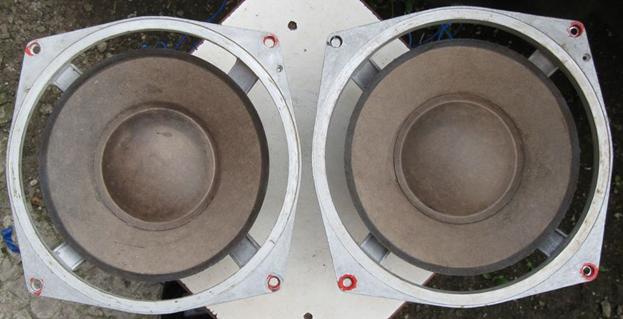
At radio bought new hangers,$ 5 per couple:

Caution! Alcohol and solvents suspensions no smearing. The adhesive polymer used. Glue areas on the suspension smoothed out with sandpaper. First glued to the cone, then after drying - frame.
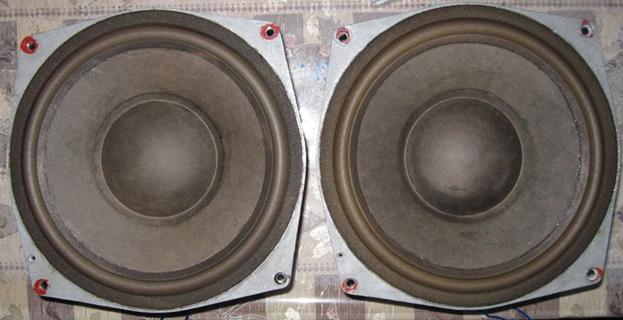
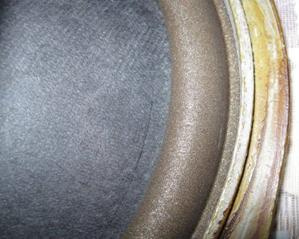

To give a decent view coated paper-ink on the outer side of progress, in 3 layers.
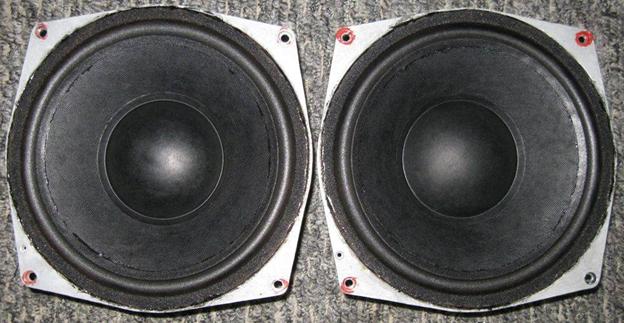
5. Replacement wiring
Used a conventional speaker cable, WOOFER 2.5 mm2, MF and HF - 1.5 mm2. But I think that one can restrict to LF - 1.5 mm2 MF and HF - 1 mm2. With him will be more convenient to work with.

Terminals set regular:

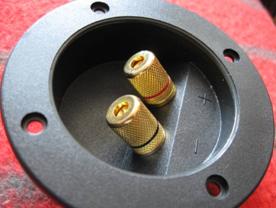
6. Improve the appearance and Assembly
Here is the alignment surface, using putty. The ones I removed, and the holes aligned. Here's what happened:
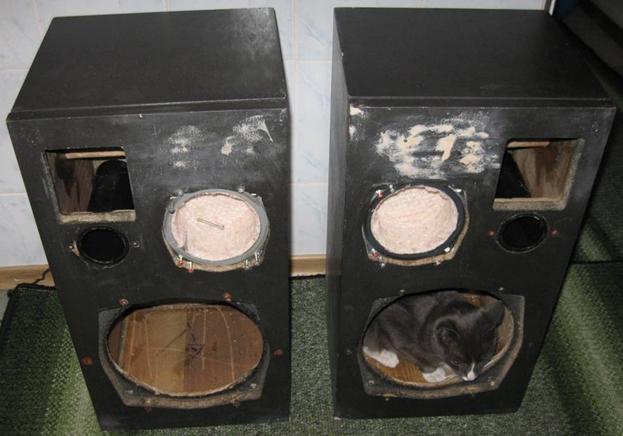
Pads on the speakers I took out of fine sandpaper and coated Matt black paint from the cylinder, in 3 layers. The adhesive bought to your taste.
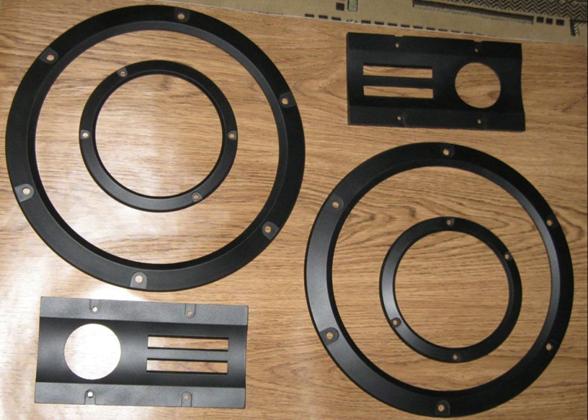
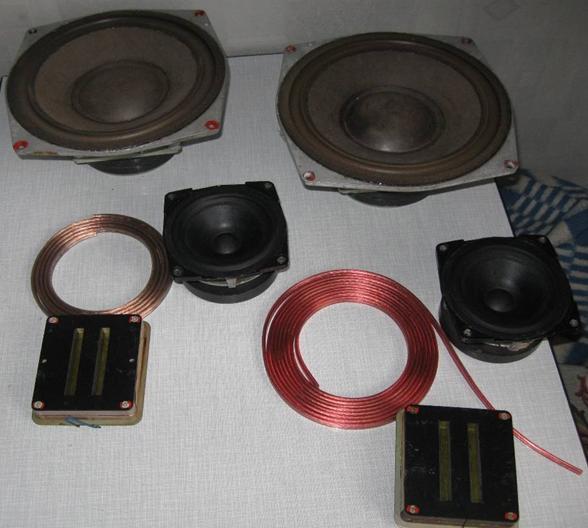
Next, I glued the hull and started assembling. Vatu put the one that was, nothing added and not subtracted. The photo shows the lining WOOFER speakers from LWП. Grid in front of the speakers have been removed. Each speaker put on soft window insulation. The result:
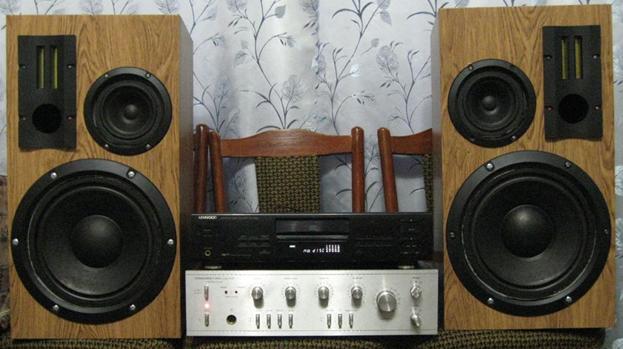
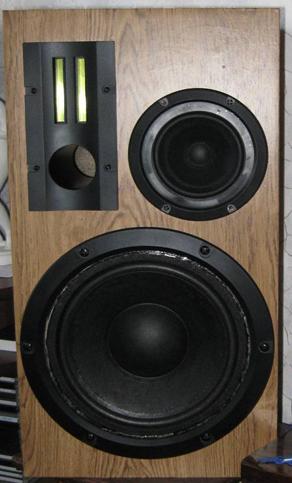 _
_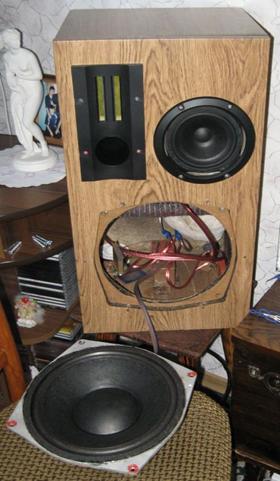
A sample of one of the joints
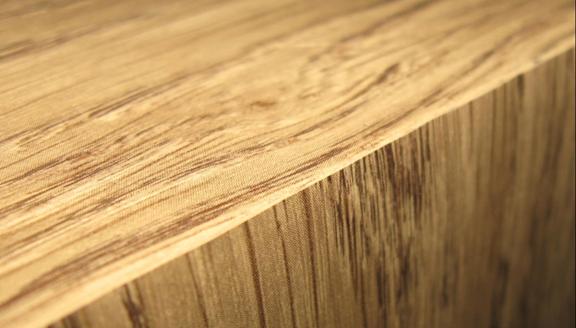
Rear view, painted, because never look back, and meaning to paste there.
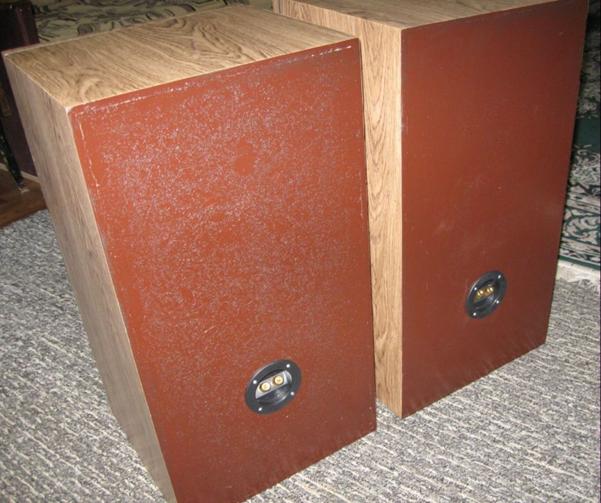
Varnish is not covered, the screw heads were painted black.
The result exceeded expectations. When properly installed, there is a full bass down to 50 Hz, then the recession, but up to 30 Hz pressure is still normal. Lower audible threshold of 27 Hz. The sound is natural, not strained. Tight bass, expressive (but not bulging middle), light and clear treble notes. Not going to say how they pull on store prices acoustics, I can only say that they sound better than they look.
If you compare with the old speakers, the new version especially with a distinct middle and light, not sobashima HF.
Another very important point. Revision of acoustics is not the full effect in a good sound. It is also very important source of difference between a computer and a normal DVD player, not to mention CD players. A good amp is a big step to good sound. Well and proper installation. Revision, of course, will change the sound, but the full effect will not be achieved without a good source, amplifier and proper installation.
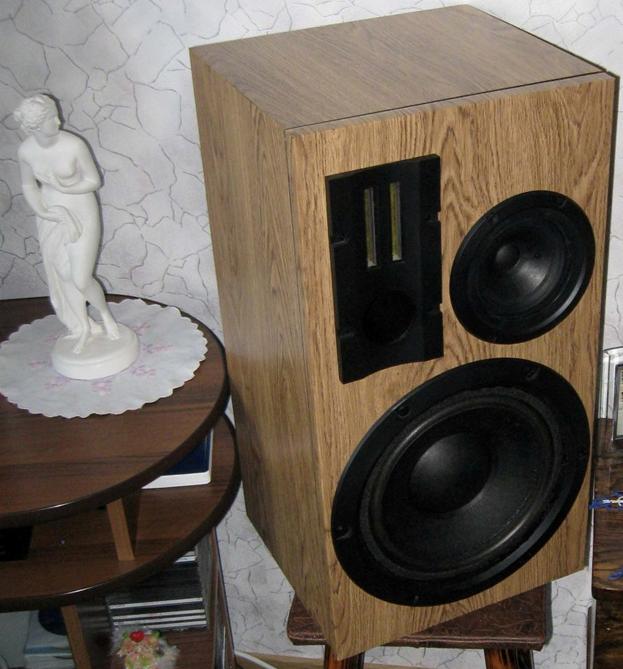
In the end I want to thank the friends and participants of the forum "Acoustic system", website "Soldering iron" cxem.net that helped in creating this project, thank You very much!!!
Good luck to everyone in the revision!
Sincerely, Dmitry!
Author: Levenets Dmitry ( lds 212008); Publication: www.cxem.net






